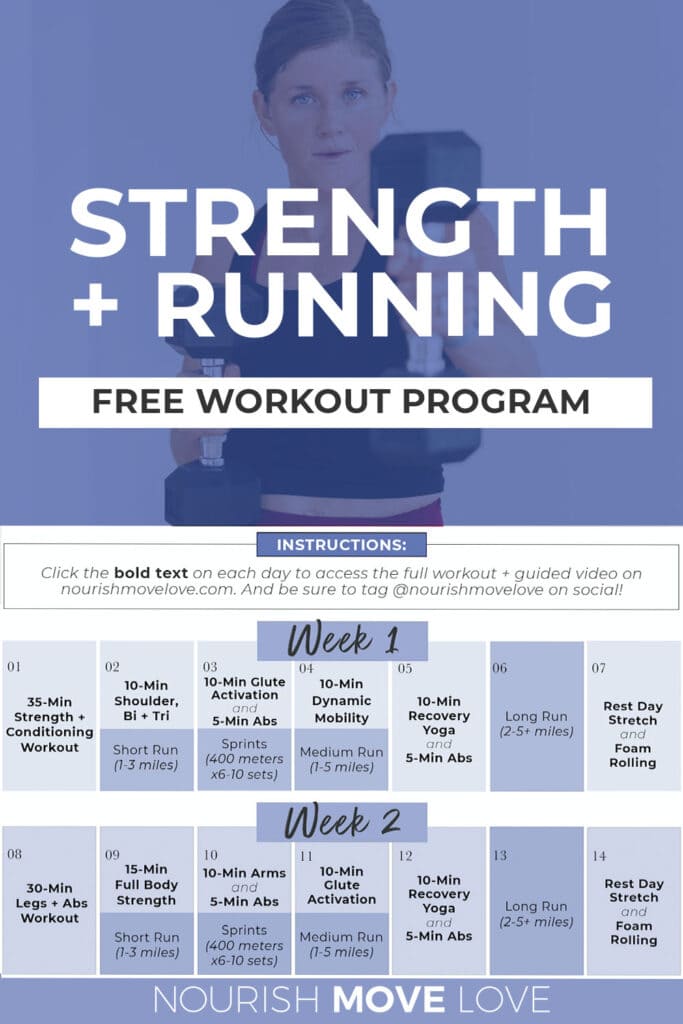Master Your Running Workout: Effective Strategies for Success
Master Your Running Workout: Effective Strategies for Success
Blog Article
The Ultimate Guide to Taking Care Of Pain When Running
For runners, experiencing pain during runs is not unusual, and recognizing how to successfully handle and stop it can make a significant difference in your overall performance and pleasure of the sport. Whether you are an experienced marathoner or simply beginning your running trip, recognizing the numerous kinds of discomfort that can emerge and the strategies to address them is essential. From pre-run warm-up routines to proper footwear selection, there are numerous factors to consider when it comes to dealing with pain while running. This comprehensive overview will certainly outfit you with the expertise and devices needed to navigate via the pain and equip you to accomplish your running goals with greater ease.

Comprehending Different Kinds Of Running Discomfort
When running, it is necessary to identify between different kinds of discomfort to stop injuries and take full advantage of performance (Read More). One common kind of discomfort that joggers may experience is muscle soreness, which commonly emerges from the anxiety placed on muscles throughout workout. This sort of discomfort is usually a typical part of the running procedure and can be handled via proper workout, cool-down, and stretching routines
Another kind of pain to be familiar with is joint discomfort. Joint pain can suggest concerns such as overuse, incorrect kind, or underlying conditions like arthritis. Overlooking joint pain can cause extra severe injuries, so it is vital to address any type of pain without delay and possibly seek specialist advice.
Additionally, sharp or stabbing discomforts need to not be ignored. These sorts of pain can indicate intense injuries such as pressures, sprains, or tension cracks - running strategy. Proceeding to run through these kinds of pain can worsen the injury and extend recovery time

Pre-Run Warm-Up and Stretching Regular
To prepare the body for a running session, implementing an effective pre-run warm-up and stretching routine is necessary. A correct workout aids raise blood circulation to the muscular tissues, improves flexibility, and reduces the risk of injury during the run. Begin with dynamic stretches like leg swings, arm circles, and high knees to gradually elevate your heart price and relax the muscular tissues. Dynamic extending aids resemble the activities you'll be doing while running, preparing your body for the task in advance. Follow this with fixed stretches concentrating on major muscle mass groups such as the hamstrings, quadriceps, calves, and glutes. Hold each go for about 15-30 seconds without jumping to advertise muscle mass relaxation and versatility. Keep in mind to listen to your body and adjust the strength of your workout based on your physical fitness degree and any type of pre-existing conditions. By incorporating a consistent pre-run warm-up and stretching routine right into your running routine, you can enhance performance and reduce the risk of discomfort or injury.
Correct Shoes Choice and Fit
Choosing appropriate shoes that fits well is critical for runners to stop pain and decrease the threat of injuries. Ill-fitting shoes can bring about sores, black toenails, shin splints, and various other agonizing conditions that can prevent performance and sideline training. When picking running footwear, it is necessary to think about variables such as foot kind, running stride, arch support, padding, and shoe size. running strategy. Visiting a specialty running shop for a gait evaluation and professional fitting can aid make certain that you choose the right footwear for your individual requirements. Running footwear ought to provide appropriate assistance and stability while likewise being comfy and lightweight. Additionally, it is suggested to change your running shoes every 300-500 miles to preserve correct padding and support. Investing in high-grade footwear that is suitable for your running style and foot makeup is a proactive action in the direction of avoiding discomfort and injuries during your runs.
Nourishment and Hydration Tips for Discomfort Prevention

Hydration is equally critical for runners to stay clear of cramps, dehydration, and various other discomforts that can cause pain during running. It is advised to drink an ample amount of water throughout the day and particularly in the past, during, and after running sessions. Electrolyte-rich drinks or sporting activities drinks can likewise be beneficial for renewing shed minerals and maintaining appropriate liquid equilibrium. running workout (Read More). By focusing on nutrition and hydration, joggers can enhance their efficiency, minimize discomfort, and enjoy a much more comfy running experience.
Post-Run Recovery Techniques to Alleviate Pain
Applying effective recovery techniques is important for minimizing pain and promoting muscle mass healing after running sessions. Furthermore, icing sore areas for 15-20 mins can aid lower swelling and numb discomfort post-run.
Moisturizing effectively post-run is critical for restoring liquids lost during exercise and assisting in muscular tissue recuperation. Taking in a balanced snack or meal that consists of healthy protein and carbohydrates within 30 minutes of finishing a run can help fix muscle mass tissue and replenish power shops. Furthermore, getting enough remainder is crucial for enabling the body to repair and reinforce muscle mass. Incorporating active recuperation activities such as light walking or swimming can additionally assist promote blood flow and lower muscle mass tightness - Read More. By incorporating these post-run healing techniques into your regimen, you can properly take care of pain and optimize your running performance.
Conclusion
Finally, attending to different kinds of running pain through correct warm-up, extending, footwear selection, nourishment, hydration, and post-run recovery strategies is vital for pain avoidance and management. By understanding advice the reasons for pain and applying these techniques, joggers can lessen discomfort and prospective injuries. It is essential to focus on overall physical wellness and well-being to make sure a successful and satisfying running experience.
Report this page